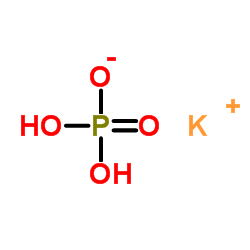| Structure | Name/CAS No. | Articles |
|---|---|---|
 |
sodium chloride
CAS:7647-14-5 |
|
 |
magnesium sulfate
CAS:7487-88-9 |
|
 |
Monopotassium phosphate
CAS:7778-77-0 |
|
 |
SODIUM CHLORIDE-35 CL
CAS:20510-55-8 |
|
 |
holo-transferrin
CAS:11096-37-0 |